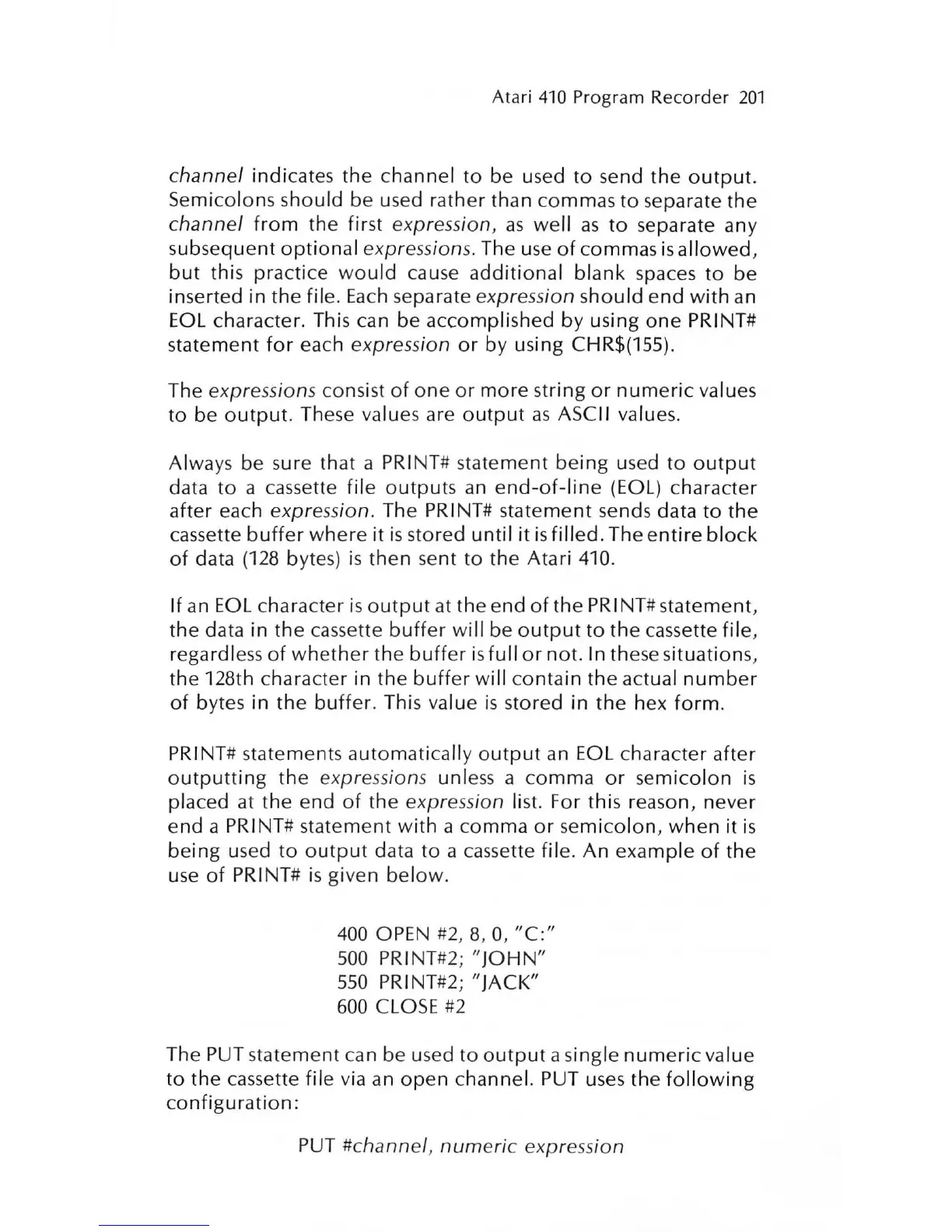Atari
410
Program Recorder
201
channel
indicates the channel
to
be used
to
send
the
output.
Semicolons should be used rather than commas
to
separate the
channel
from
the first expression,
as
well
as
to
separate any
subsequent
optional
expressions. The use
of
commas
is
allowed,
but
this practice
would
cause
additional
blank
spaces
to
be
inserted
in
the file.
Each
separate
expression
should
end
with
an
EOL
character. This can be accomplished by using
one
PRINT#
statement
for
each
expression
or
by using CHR$(155).
The
expressions consist
of
one
or
more
string
or
numeric
values
to be
output.
These values are
output
as
ASCII values.
Always
be sure that a PRINT# statement
being
used
to
output
data
to
a cassette file
outputs
an
end-of-line
(EOL) character
after each
expression. The PRINT# statement sends data
to
the
cassette
buffer
where
it
is
stored
until
it
is
filled.
The
entire
block
of
data
(128
bytes)
is
then
sent
to
the Atari
410
.
If
an
EOL
character
is
output
at
the end
of
the
PRI
NT#
statement,
the data in the cassette
buffer
will
be
output
to
the
cassette
file
,
regardless
of
whether
the
buffer
is
full
or
not. In these situations,
the 128th character in the
buffer
will
contain
the
actual
number
of
bytes in
the
buffer.
This value
is
stored
in
the hex
form.
PRINT# statements automatically
output
an
EOL
character after
outputting
the
exp
ressions
unl
ess
a
comma
or
semicolon
is
placed at the end
of
the expression list. For this reason, never
end a
PRINT# statement
with
a comma
or
semicolon,
when
it
is
being
used
to
output
data
to
a cassette file.
An
example
of
the
use
of
PRINT#
is
given
below.
400
OPEN
#2
,
8,0,
"c:"
500
PRINT#2; "
JOHN"
550
PRI
NT#2; "JACK"
600
CLOSE
#2
The
PUT
statement
ca
n be used to
output
a single
numeric
value
to
the cassette file via
an
open
channel.
PUT
uses
the
following
configu
ration:
PUT
#cha
nn
el,
numeric
exp
re
ss
ion

